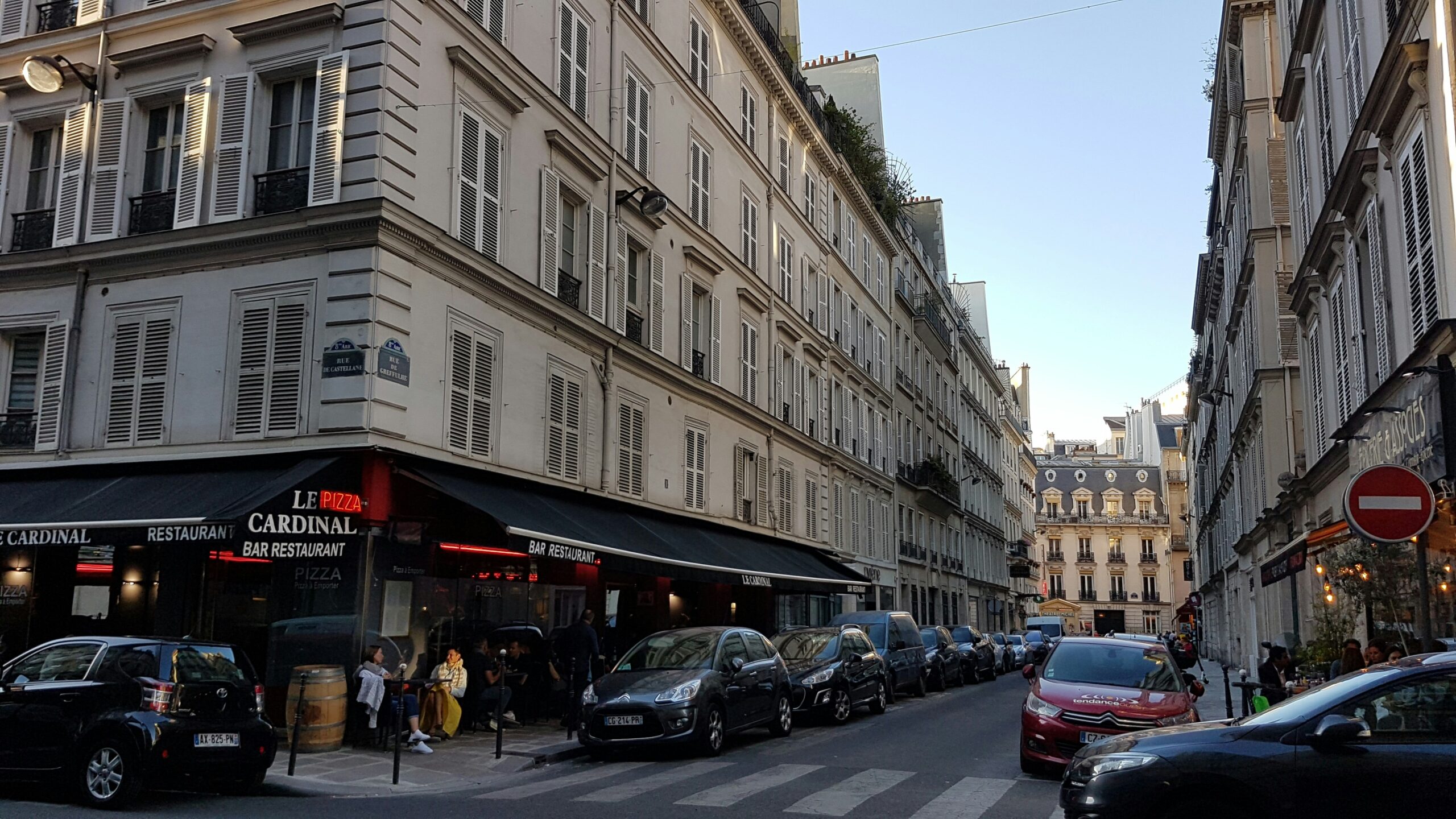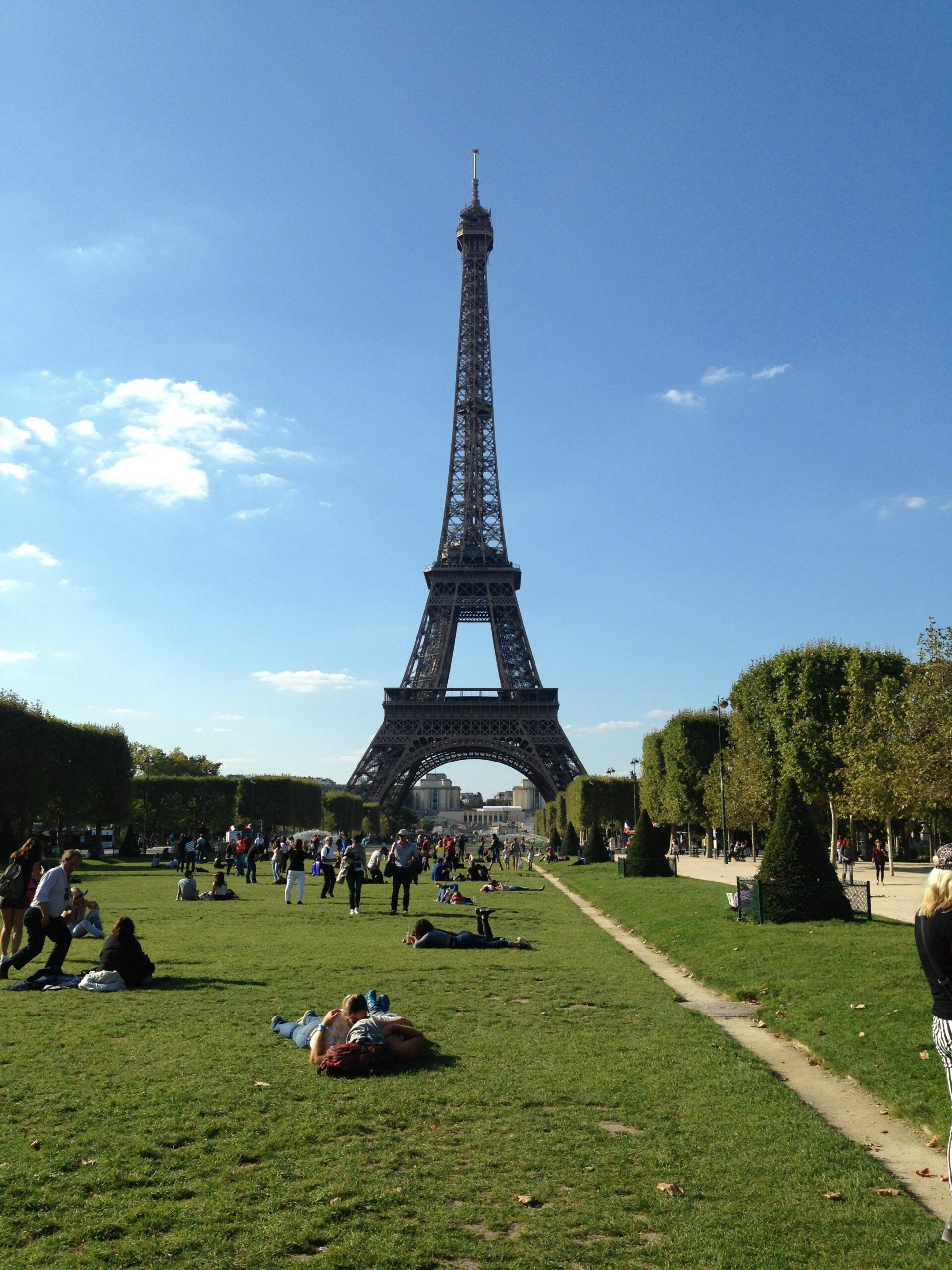Introduction to Paris Postcodes
Postcodes in Paris play a critical role in the efficient organization of mail delivery and navigation throughout the city. Established as part of the broader French postal system in the 19th century, Parisian postcodes not only serve as a practical necessity for logistical purposes but also reflect the historical development of the city itself. The system comprises a five-digit numbering format, with the first two digits indicating the area of the city, while the last three specify the particular locality.
The significance of postcodes for residents and visitors cannot be overstated. For locals, having a clear understanding of their postal code can ensure the swift reception of parcels and letters, while facilitating easy access to municipal services. Tourists and newcomers to the city benefit from familiarizing themselves with postcode designations, as these can assist in navigating the diverse districts of Paris, commonly referred to as arrondissements.
Moreover, postcodes provide a framework for identifying various neighborhoods within the city, each contributing to the rich tapestry of Paris’s cultural and historical identity. From the lively atmosphere of the 11th arrondissement to the historic charm of the 7th, knowing one’s postcode can enhance the exploration of these unique areas, influencing choices in accommodation and leisure activities. The geographical markers established through the postal code system serve to orient visitors in a city known for its intricate layout and distinct localities.
In essence, the postcode for Paris is more than just a sequence of numbers; it is a vital organizational tool that underscores the importance of location in urban living, reflecting both practical needs and the vibrant history of a city that continues to capture the hearts of many.
The Structure of Paris Postcodes
Postcodes in Paris are crucial for navigation and identifying various districts within the city. Understanding their structure is beneficial for residents and visitors alike. Each postcode for Paris consists of a five-digit number, which can be dissected into two distinct components. The first two digits denote the department number, while the last three digits specify the district or arrondissement within the city.
In the case of Paris, the department number is always “75” as it represents the city of Paris itself. The last three digits range from “001” to “020,” corresponding to the 20 arrondissements that characterize the city. For example, the postcode “75001” refers to the 1st arrondissement, while “75020” points to the 20th arrondissement. This structured approach facilitates easy identification of specific locations within Paris, effectively supporting logistical planning for both personal and commercial purposes.
This system is particularly advantageous for postal services, emergency services, and even tourists looking to explore different areas within the city. The division into arrondissements allows for efficient addressing and organization of services, ensuring anyone can find their way in the extensive urban layout of Paris. It is also worth noting that these postcodes are not just mere numbers; they can encapsulate historical, cultural, and social nuances often associated with the areas they represent.
By breaking down postcodes in such a manner, one can better appreciate the geographic and administrative framework of Paris. Whether one is sending mail, accessing services, or engaging in leisure activities, understanding the postcode system will undoubtedly enhance the experience of navigating Paris.
Key Features of Paris Postcodes
Postcodes in Paris serve as crucial identifiers for the city’s diverse neighborhoods and arrondissements. Each postcode is a five-digit number, with the first two digits indicating the specific arrondissement. For instance, a postcode beginning with “75” signifies a location within central Paris, while the subsequent numbers can further specify neighborhoods and sectors within that arrondissement. This system allows residents and visitors alike to easily decipher locations within the Paris metropolitan area.
One significant aspect of postcodes in Paris is their role in distinguishing between the inner city and the suburban areas. As one moves outward from the city center, the postcodes shift—reflecting a more extensive metropolitan landscape that encompasses various surrounding communes. The postcodes for Paris may display notable differences when juxtaposed with those in the outskirts, highlighting the transition from urban to suburban settings. For example, as one travels into the petite couronne (the inner suburbs) or grande couronne (the outer suburbs), the postcodes change, revealing the geographical and cultural distinctions between these areas.
Moreover, postcodes in Paris are not merely numbers; they encapsulate the city’s rich history and socio-economic diversity. Each arrondissement has its own unique characteristics, shaped by historical developments, demographics, and public amenities. From the artistic enclaves of Montmartre in the 18th arrondissement (postcode 75018) to the luxury boutiques of Saint-Germain-des-Prés in the 6th (postcode 75006), the use of postcodes serves as an essential tool for understanding the complexities of the city’s layout and its multifaceted neighborhoods.
Geographical Distribution of Postcodes in Paris
The geographical distribution of postcodes for Paris is a reflection of the city’s intricate urban layout and its historical development. Paris is divided into 20 administrative districts known as “arrondissements,” each assigned a unique postcode ranging from 75001 to 75020. The postcode system in Paris not only serves as a means of navigation but also provides insights into the cultural and social dynamics within the city.
For instance, the first arrondissement, 75001, is located near the historical heart of Paris, encompassing landmarks such as the Louvre Museum and the Palais Royal. Similarly, the 75003 postcode represents the lively area of Le Marais, renowned for its historic architecture, trendy boutiques, and vibrant Jewish community. This arrondissement is characterized by its narrow, winding streets that date back to medieval times, attracting both locals and tourists alike.
Moving to the 18th arrondissement, designated as 75018, one finds Montmartre, a district celebrated for its artistic history and the iconic Sacré-Cœur Basilica. This area has long been a hub for artists, musicians, and performers, solidifying its status as a culturally rich part of the city. The postcode for Paris here signifies not only a place but also an artistic identity.
Another notable area is the Latin Quarter, represented by the postcode 75005. This district, home to several prestigious universities, boasts a lively student atmosphere and a plethora of cafés, bookstores, and theaters. The historical significance of this arrondissement enriches the overall tapestry of Paris’s identity.
In summary, understanding the geographical distribution of postcodes in Paris not only enhances navigation but also deepens our appreciation for the city’s diverse neighborhoods and their unique characteristics.
Significance of Postcodes for Tourists
Understanding the postcode system for Paris is essential for any tourist aiming to explore the city efficiently. Paris is divided into distinct postal zones, identified by five-digit codes, where the first two digits indicate the postal area corresponding to the arrondissement. Familiarity with these codes can significantly facilitate the planning of sightseeing trips, assisting visitors in determining the proximity of attractions, accommodations, and amenities.
When navigating the city’s vast array of landmarks, knowing the postcode for Paris can aid in creating a structured itinerary. Many popular tourist spots are concentrated in certain arrondissements, and by understanding the postal designation of each area, visitors can optimize their travel routes. For instance, the iconic Eiffel Tower is located in the 7th arrondissement, with the postcode 75007, making it easier to integrate into one’s travel plans when exploring nearby attractions, such as the Champ de Mars or the Trocadéro Gardens.
Moreover, the usage of postcodes extends beyond merely locating points of interest; it plays a crucial role in navigating public transport. Paris boasts an extensive metro and bus network, with many stations named after the nearest postcode. By leveraging travel apps or digital maps that incorporate postcode data, tourists can streamline their journeys, ensuring they reach their desired destinations with minimal hassle. For example, entering “75001” into a navigation application will guide tourists to the heart of the first arrondissement, bringing them closer to sites like the Louvre Museum.
In conclusion, postcodes in Paris serve as a valuable tool for tourists, enhancing overall travel efficiency. By integrating postcode knowledge into their travel strategies, visitors can not only navigate the city more effectively but also enrich their experience exploring the diverse attractions Paris has to offer.
Differences between Paris and Greater Paris Postcodes
The postal code system in Paris and the surrounding Greater Paris metropolitan area serves as a fundamental aspect of urban organization. In Paris, the postal codes are uniquely formatted and primarily consist of five digits, with the first two digits ranging from 75, indicating the central city. Each arrondissement within the city has its dedicated code, allowing for easy identification of specific areas. For instance, the postal code for the first arrondissement is 75001, whereas the fifteenth is 75015. This systematic approach helps streamline services and ensures residents receive prompt local attention.
In contrast, the Greater Paris region, which encompasses various suburban departments, utilizes a wider range of postcodes that extend beyond the 75 prefix. Suburban areas, such as Seine-Saint-Denis or Val-de-Marne, utilize postcodes beginning with 93 and 94, respectively. These postal codes cover a larger geographical area and often indicate a diverse range of services and amenities available to residents. Consequently, the distinction between Paris and its adjoining areas reflects not just the physical location but also differences in resources and accessibility.
Moreover, the services associated with the postal codes of Paris typically include more extensive public transportation options, cultural amenities, and a higher concentration of businesses and recreational facilities. While residents of the outer suburbs benefit from quiet neighborhoods and spacious living environments, they may experience variations in service delivery and accessibility compared to their city counterparts. Overall, the postcode system in Paris and Greater Paris illustrates the urban divide, influencing not only the geographical identity of the areas but also shaping the daily lives of the residents. Understanding these distinctions in postcodes is essential for anyone navigating the differences between the city and its surroundings.
How to Use Paris Postcodes in Daily Life
In the bustling city of Paris, postcodes serve as essential tools that facilitate various aspects of daily life for residents and locals alike. Understanding how to effectively use the postcode for Paris can greatly enhance efficiency, particularly in scenarios like online shopping, delivery services, and official correspondence. Each of the 20 arrondissements, or administrative districts, is assigned a specific postcode, making it easier to identify and categorize different areas of the city.
When engaging in online shopping, for example, correctly entering the postcode is crucial. Retailers often use this information to calculate shipping costs, delivery times, and to confirm the availability of items in your region. Failure to provide an accurate postcode for Paris may result in delays or even cancellation of a purchase. For residents, familiarizing themselves with their specific postcode is a fundamental step to ensure smooth transaction processes.
Additionally, for delivery services, the postcode acts as a vital point of reference. Delivery personnel rely on this information to navigate and efficiently reach their destinations. Knowing the postcode can streamline the ordering process for food, packages, or any services requiring delivery. It not only helps in swift deliveries but also increases the likelihood of receiving accurate and timely service.
Moreover, the postcode system plays a significant role in official correspondence, such as mail delivery or administrative communications. Accurate addressing, including the appropriate postcode for Paris, is paramount to ensure that mail reaches its intended recipient without unnecessary delays. Therefore, both locals and residents must be cognizant of the importance of this numerical identifier in effectively managing their daily activities.
Common Misconceptions about Paris Postcodes
Paris, often referred to as the City of Light, is not only famous for its rich history and culture but also for its unique postal system. However, there are several misconceptions about postcodes for Paris that can lead to confusion among residents and visitors alike. One prevalent myth is that certain neighborhoods share the same postcode. In reality, every arrondissement in Paris has its own distinct postcode, typically beginning with the number 75 followed by a two-digit number indicating the specific district. For instance, the postcard-perfect Montmartre is identified by 75018, while the historic Latin Quarter falls under 75005.
Another common misunderstanding is the belief that postcodes in Paris have changed over time. In fact, the current system has remained stable since its introduction in 1849. Prior to this, Paris utilized a much different postal format which did not provide the same clarity. This historical context is crucial in appreciating the current structure and organization of Paris’s postal system. Further complicating matters, individuals may assume that a postcode denotes a particular level of affluence or prestige, which is not the case. While some areas with certain postcodes may indeed be wealthier, the postcode itself is simply a tool for efficient mail delivery rather than a reflection of the socioeconomic status of the area.
Additionally, the idea that Paris postcodes cover larger geographical areas than they actually do is misleading. Each postcode is quite localized, allowing for precise identification of locations within the boundaries of the city. Understanding these distinctions is vital for anyone navigating the intricacies of urban life in Paris. By debunking these myths surrounding postcodes for Paris, one can gain a clearer perspective on how this essential system works, ultimately making interactions within the city more accessible and efficient.
Conclusion: The Future of Postcodes in Paris
The transformation of Paris is accelerating, as technology and urban growth reshape the city’s landscape. With these changes come new challenges and opportunities for the postal system. The current postcode for Paris system, while deeply ingrained in the city’s functionality, will need to adapt to the rapid changes in urban demographics and infrastructure. As the population expands and neighborhoods evolve, the requirement for efficient mail distribution becomes more pressing.
Technological advancements play a significant role in redefining how postal services operate. The integration of smart technologies and digital systems can enhance the efficiency of sorting and delivering mail. In the future, we may witness the emergence of dynamic postcode systems, which can adjust in real-time according to the density of population or significant events taking place in certain areas. This adaptability could lead to quicker mail delivery times and optimized routes for postal workers.
Furthermore, as Paris continues to embrace environmental sustainability, there is the potential for postcodes to facilitate green initiatives. For instance, localized delivery systems may emerge, emphasizing the reduction of carbon footprints. This could include electric or bicycle deliveries that align with the city’s goals to decrease pollution and promote eco-friendliness.
As urbanization gathers pace in the wider metropolitan area, satellite towns are becoming increasingly integral to the overall postal network in and around Paris. The expansion of the postcode for Paris will likely reflect these developments, ensuring that all residents are adequately served. Therefore, it is essential for postal services to remain forward-thinking, exploring innovative approaches to meet the evolving needs of an expanding and diversifying city.

We share information about current trends and stories of people all around the world.



